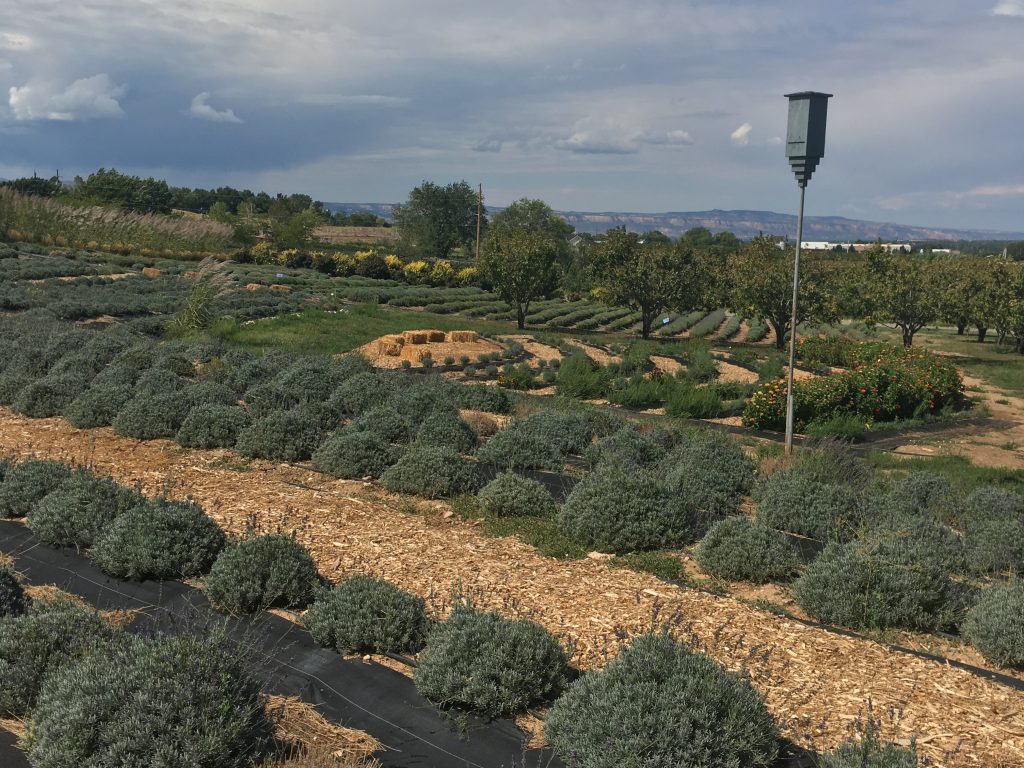The air’s getting cooler and soils are still warm. Autumn offers us an array of reasons to get back to the garden for one final planting.
There are both pros and cons to planting lavender and other perennials in the fall, rather than in the spring. Deciding which season to plant depends on factors like your growing region, your intentions, the resources available to you, the size of your planting and others.

Benefits of fall planting
Planting into the warm soils of fall allows roots to grow right away, giving them a healthy start. By contrast, in spring, plants won’t grow until soils are warm enough for them. In fall, plants can establish themselves under ideal conditions: warm weather, a less scorching sun, with less pest, disease pressure and (maybe) rainfall.
Planting perennials in the fall gives them a chance to get established before going into winter dormancy. Then, come spring, they’re ready to thrive.
Though lavender is incredibly heat tolerant once established, it, like many other perennials, does better in cooler temperatures until its roots are established. The cooling temperatures of fall, rather than the rising temperatures and erratic weather of spring, help lavender and other perennials transition into the ground.
Tips and considerations
Climate
Lavender needs a good 8-10 weeks to get established before soil temperatures get too low or a hard frost hits. Knowing your hardiness zone and your region’s average first hard frost date can help you determine when to do your fall planting. Count 8-10 weeks backwards from the expected first hard frost. In regions with more mild winters, fall planting becomes more of an option.
Goals and risk
Another element beyond climate to consider is intention: Are you planting a few plants around your house, or a full acre? Risk is a big factor in fall planting. The reward is a head-start in spring, but if an early harsh freeze comes before your plants are fully established, you run the risk of losing some or many of your plants. Try experimenting with fall planting in colder regions before diving into a big planting.
That said, come spring, don’t be too hasty in deciding that your lavender plants have died! Lavender is slow to come out of winter dormancy – especially English lavender. Here in the high desert, we often don’t see lavender plants coming back to life until May! So be sure to give them enough time to surprise you before pulling them from the ground.
Availability and scale
Purchasing plants in fall is also hit or miss. You may find sales at nurseries on just what you’re looking for, yet you’ll also likely find a more limited selection of plants and cultivars available to you. Large plantings can be organized in the fall for spring planting, which may make for a smoother process.
Here at our farm, we accept wholesale and large-quantity lavender plant orders in the fall, up until November 30. Since we do all of our own propagating in late fall, we need time to prepare in order to best serve our customers.
You can do your own propagation, too, in which case, you’ll be preparing for a spring planting.
Read: How to propagate lavender from cuttings: a step-by-step guide
Plant spring-blooming bulbs, trees and shrubs in the fall, too. Until the ground freezes, keep newly planted trees and shrubs well-watered. This way, they’re off to a good start before going into winter dormancy.
Whether you have a small herb garden or acres of lavender, play around with fall planting to see if it works for you. Either way, come spring, you’ll certainly have something to look forward to.


Holly Rock
What dept do you plant seed? or can it be planted by seed?